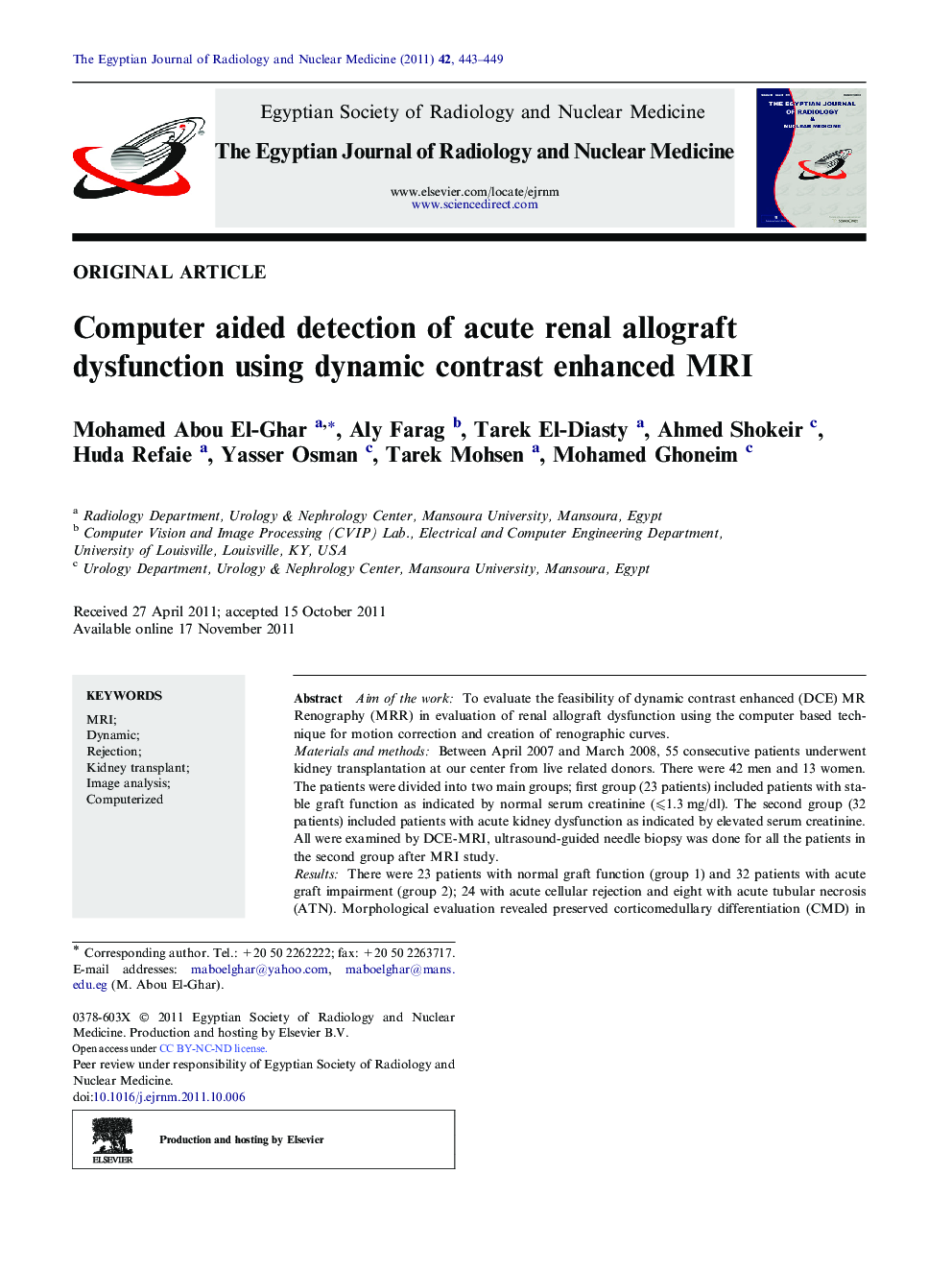| Article ID | Journal | Published Year | Pages | File Type |
|---|---|---|---|---|
| 4224551 | The Egyptian Journal of Radiology and Nuclear Medicine | 2011 | 7 Pages |
Aim of the workTo evaluate the feasibility of dynamic contrast enhanced (DCE) MR Renography (MRR) in evaluation of renal allograft dysfunction using the computer based technique for motion correction and creation of renographic curves.Materials and methodsBetween April 2007 and March 2008, 55 consecutive patients underwent kidney transplantation at our center from live related donors. There were 42 men and 13 women. The patients were divided into two main groups; first group (23 patients) included patients with stable graft function as indicated by normal serum creatinine (⩽1.3 mg/dl). The second group (32 patients) included patients with acute kidney dysfunction as indicated by elevated serum creatinine. All were examined by DCE-MRI, ultrasound-guided needle biopsy was done for all the patients in the second group after MRI study.ResultsThere were 23 patients with normal graft function (group 1) and 32 patients with acute graft impairment (group 2); 24 with acute cellular rejection and eight with acute tubular necrosis (ATN). Morphological evaluation revealed preserved corticomedullary differentiation (CMD) in group 1 while in group 2 there were poor CMD in 16 cases and lost CMD in nine cases. Functional evaluation using the mean intensity of the medullary region, to create MR Renographic curves, was used with sensitivity, specificity and accuracy of 75%, 96% and 84%, respectively.ConclusionComputer aided analysis of renographic MR curves and the mean intensity of the medulla region have more important features than maximum intensity, it allows separation of normal kidney from impaired one but it cannot differentiate the underlying causes of the graft dysfunction.
